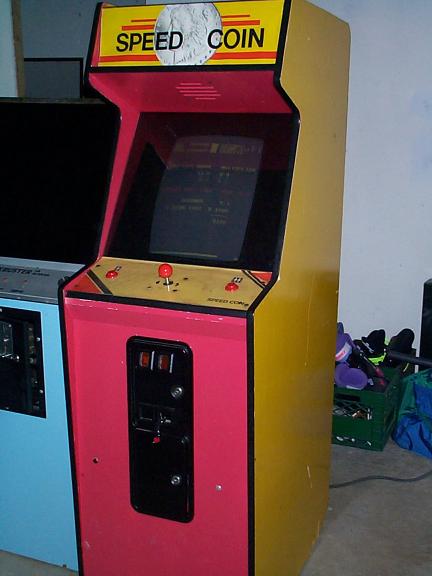
As far as I know, I'm the only one with a Speed Coin cabinet. It's definitely a prototype, as the cabinet is made of nice plywood and not particle board. Also, the marquee and control panel are made of colored paper, colored electrical tape, and a blown-up xerox copy of a coin face. My understanding is that it came from Stern when it shut down.
The boardset is a Scramble, with hand-labelled ROM chips inside. Also, the wiring harness is different, since it only requires a 2-way joystick.
When I went to plug this into the Scramble driver in MAME (back in 1999!), I was stymied by the fact that the background was blue in MAME, but black on the "real thing". I traced through the PCB only to find that the monitor was adjusted with the blue gun turned off! When I adjusted it, it matched MAME exactly.
In case you are wondering about the sound, the music sounds kind of muted and noisy on the real thing, just like in MAME.
Last year, I was stunned to play Speed Coin in an arcade in Nashville, Tennessee. It turns out the Ultracade guys added that game to their Multigame system, under "Arcade Classics"?!. I'm sure they used the ROM images I dumped in my basement, and here it was on a machine in another city. Pretty strange feeling.
I really don't think it's a classic. More like "Arcade Relics". :)
Oh well, I'll get back to Space Raider this weekend, hopefully. I have a newly-found JAMMA harness and a brand new RGB-to-TV adapter which should make things easier. With that, I'll be able to take screenshots from actual boards, and compare them with MAME.


